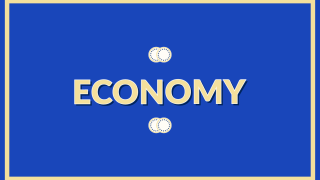The first two months of 2014 have gone by in the twinkling of an eye and, economically speaking, Mexico seems to remain in 2013. While the government is prematurely hailing the success of the reforms’ approval, the country’s GDP grew only by 1.06% during last year, its lowest level since the 2008 financial crisis. The Mexican economy is still stuck in a poor growth that is the result of flawed structural conditions and reinforced by government bad decisions, especially in expenditure matters. If President Peña wants to live off the controversial TIME international issue published at the end of February, he must concentrate his efforts into achieving short-term results before the economy turns out to be his government’s epitaph.
Most the reforms boosted by the federal government last year will contribute in accelerating Mexico’s growth in the medium and long term. However, the start of 2014 does not seem encouraging. The Secretariat of Public Finance (SHCP) forecasts a 3.9% growth for 2014. Helped by the very low level experienced in 2013, a higher growth in percentage terms is simpler due to the fact that the starting point is quite precarious. Although it is not very impressive, the 3.9% predicted by SCHP is above the growth expectations forecasted by independent economists as well as financial institutions, which have started to downgrade their previous reviews due to the weakness with which 2014 has begun. While Mexico is shining in all international headlines with its “momentum”, Brazil, which has an economy twice the size of the former, grew 2.3% in 2013. Lately, several analysts have stated that there are unfavorable conditions in the short terms that ought to be promptly addressed.
According to the “Global Competitiveness Report 2013-2014”, published by the World Economic Forum, the Mexican macroeconomic environment is worse than that of Chile, Peru, Colombia and even Ecuador (Mexico is ranked 49th out of 148 assessed countries). The manufacturing industry has a weak performance, as shown in the ranking published by the Mexican Institute of Finance Executives (IMEF). All kinds of Mexican exports decreased during January, while the Consumer Confidence Index feel abruptly, which can be attributed to the draconian tax reform of 2013, which has greatly affected consumption. Last week, SHCP stated that the aforementioned fiscal scheme would remain for the rest of the administration, meaning that the country will still have a tax collection system that does not create incentives for greater growth, damages formal employment and penalizes the savings of Mexican population.
The government should not rest on its laurels: it is yet to be seen if its purpose of achieving an economic enhancement via expenditure can manage to smooth the drop in jobs registered within the Mexican Institute of Social Security (which has a monthly growth from January to December that is 35% less than that of January 2013) as well as improving the unemployment rate in the economically active population (5.05% as of January 2014). The administration will spend 4.5 billion pesos this year and it is not sure if it can do it in a transparent and efficient manner so the economy can be put in motion. If the Presidency’s Office is only thinking about winning the 2015 elections and appearing to be a “strong” State, then they should not be worried about the opposition but market shocks that will appear whenever the economy shows clear signs of a continuous weakness.
“Saving Mexico” requires a lot more than approving reforms in legislative Chambers. While the aforementioned reforms are not implemented and certainty conditions regarding the rule of law, the quality of infrastructure as well as a real support to productive activities remains elusive, these changes will not be consolidated and it will be hard to generate favorable growth expectations.
CIDAC






Comments